The ribs are a type of bone in dogs, that is, long and curved bones that form a solid part of the dog’s chest wall. The function of the ribs is to protect the dogs’ vital organs, such as heart and lungs.
You are probably familiar with the number of ribs humans have, but, have you ever wondered how many ribs dogs have?
Dogs have a total of 13 pairs of ribs, of which 9 are sternal and 4 asternal.
If you have heard of the term floating ribs in dogs, this may have sounded strange and scary to you, but this term actually refers to the last pair of ribs in the dog’s chest.
This pair of ribs is attached to the spine, but does not extend all the way to the frontal part of the chest, hence the name floating ribs.
Many dog owners are shocked when they first notice these ribs on their pet and think that their dog’s rib is broken. However, in fact, this is dogs’ natural, innate characteristic.
Keep reading to learn all about floating ribs in dogs, what their symptoms are, what causes them, and whether floating ribs can be associated with certain health problems.
What Causes Floating Ribs In Dogs?
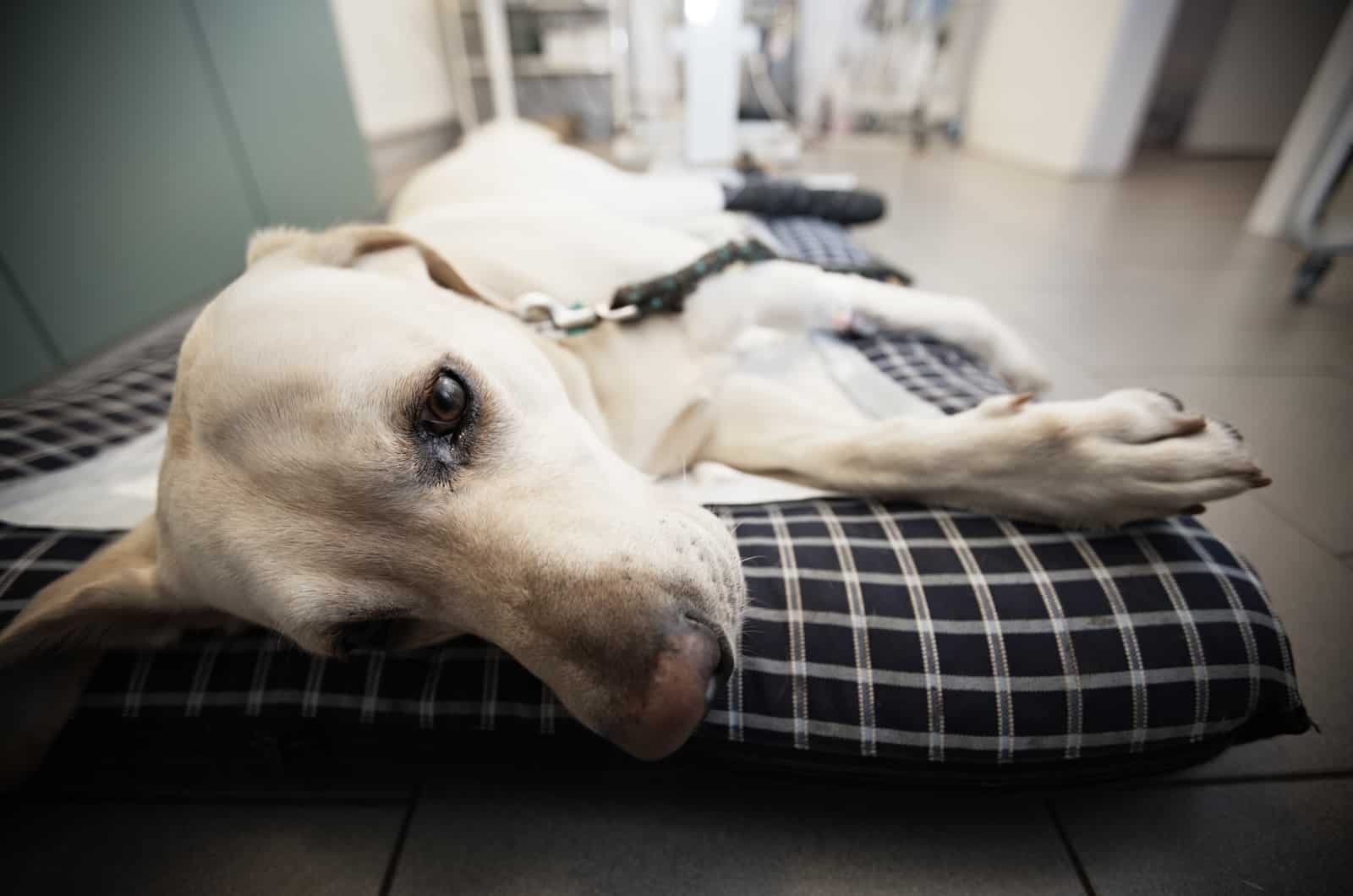
Floating ribs are a natural form of a dog’s bones – so there is no malignant cause or deformity that would cause this to occur in your dog. If you notice a floating rib in your dog, do not worry and think that something is wrong with the anatomy of your dog’s body.
Floating ribs in a dog are shorter than other ribs and are connected to the dog’s spinal cord. Simply, the last pair of ribs acts as a support for the spine and protects the dog’s body – therefore, floating ribs are not a deformity, but a perfectly normal part of our dogs’ bodies!
All dogs have floating ribs, but they might be more visible in certain dog breeds, such as Dachshunds, Boxers, Dalmatians, and Greyhounds.
Although floating ribs are perfectly normal, what is essential for pet owners is to know how to distinguish floating ribs from broken ribs.
If you are familiar with floating ribs, you might not even notice your dog is maybe struggling with a broken rib. Broken bones in a dog will cause pain, and the dog will probably refuse to walk or show any kind of will for social interaction.
A floating rib can sometimes even seem like a lump, so many owners are afraid that their dog might not have a tumor. But, don’t worry in advance – in most cases, floating ribs are perfectly normal.
How Will I Know Something Is Wrong With My Dog’s Floating Ribs?
Some dogs will have a hard time finding out whether there is something wrong with their dog’s floating ribs. In most cases, you might notice your dog’s protruding ribs in certain dog’s positions, but, it will all actually look exactly the way it is supposed to look like.
However, in some other cases, your dog might be dealing with injured or broken ribs. There are certain symptoms that might show you your dog is in pain or discomfort.
Let’s look at them.
1. Reluctance And Lethargy

When a dog suddenly starts acting weird, many owners immediately get worried.
Your dog usually loves to play, run, and jump, but now seems completely uninterested in such activities? Moreover, your dog is lethargic, hardly notices you when you enter the room, and shows no desire to cuddle and play?
If your dog is otherwise completely opposite of the description above, it is possible that he is struggling with a broken or injured floating rib.
This condition causes great pain in the dog, makes it less mobile, which leads to the dog being lethargic and wanting to isolate itself from its family members.
2. Aggressive Behavior
Some dogs want to be alone when they are in pain, but some others will show aggressive behavior. So, if you try to touch the dog’s upper abdomen, your pet might bark excessively, snap at you, or even try to bite you.
This is a normal behavior when a dog’s rib cage is injured; in these situations, dogs are scared because they don’t know what is happening to them. If you try to touch the place that hurts them, this can cause additional fear and pain in them.
Therefore, you need to be very gentle while approaching the painful area. At the same time, try to calm the dog with comforting words.
Dogs cannot describe their feelings and pain in words, but they can tell us a lot with their body language.
3. Unusual Positions
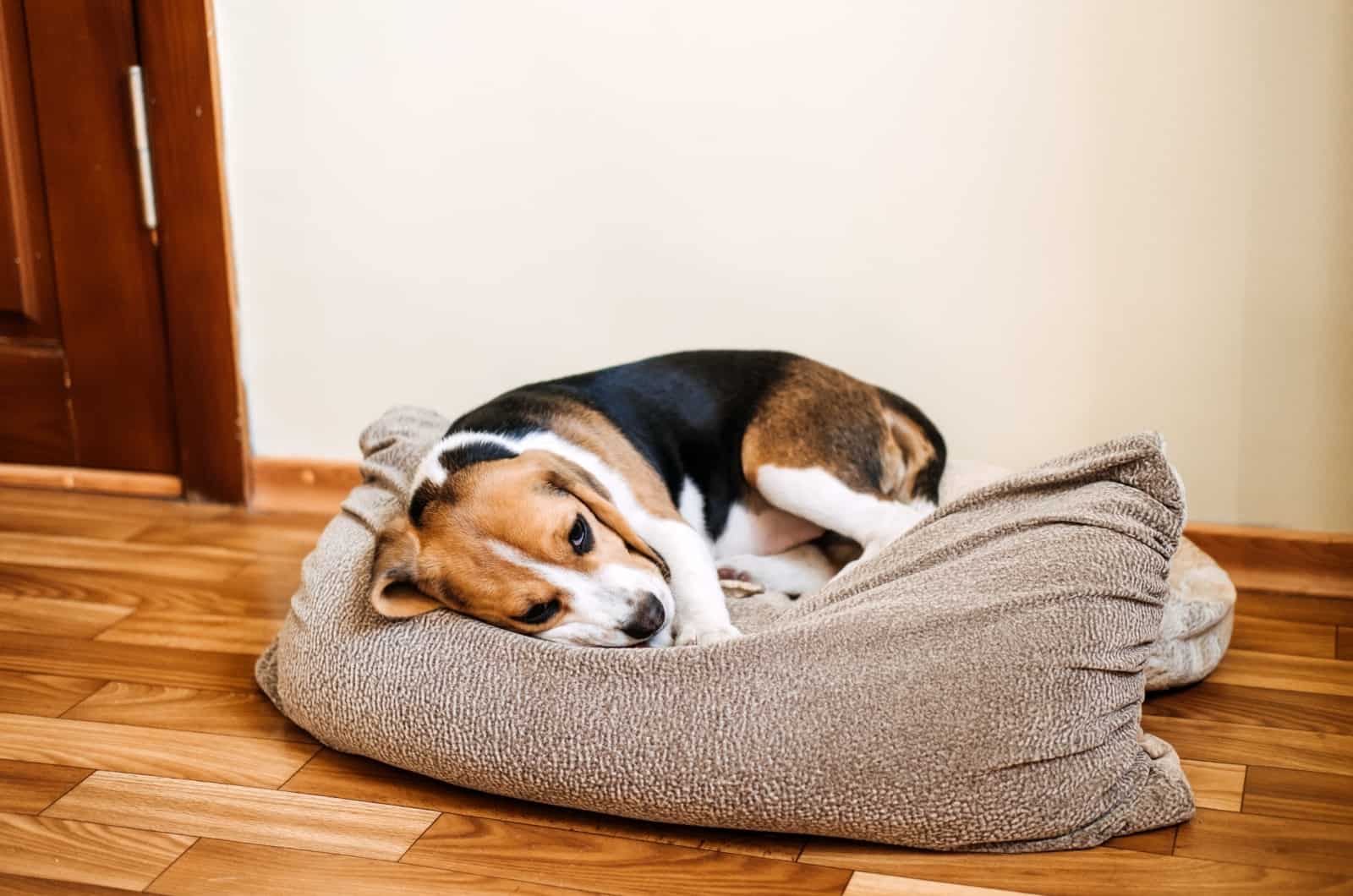
We can learn a lot about the condition of our dogs from their body positions. For example, a dog that jumps expects something from you or asks you to give it something that you have in your hand.
You can also learn a lot about your pet’s emotions from the dog’s tail position chart; so the tail can tell you that your dog is excited, scared, or alert.
The position in which your dog is lying can also tell you that the dog is in pain and that it may have an injured floating rib.
For example, many dogs will arch their backs because this will be the only position they will be comfortable lying in. Most dog owners probably do not normally encounter this body position in their pets, therefore, this could be a clear sign that something is going on with the dog.
4. Pain And Swelling
If a dog has a ruptured or broken floating rib, it will be in severe pain. You will easily notice your dog is in pain, and you also might notice a swollen or bulged chest in your dog.
These two signs clearly indicate that your dog’s ribs are injured. Before things get worse and your dog’s health becomes more compromised, you should go to the vet clinic as soon as you notice swelling and great pain in your dog.
Also, some dogs with broken or injured ribs might also have a swollen belly. Read more on how a normal puppy belly should look like.
5. Fast Breathing
There are many reasons for a puppy’s rapid breathing.
For example, young puppies will usually breathe faster than adult dogs. While the adult dog’s breathing rate is usually 20 to 34 breaths per minute, this rate in puppies can go up to 40 breaths per minute.
As the puppy grows up, its breathing rate will usually decrease. However, there are other reasons for a dog to breathe fast, rather than only its age.
It is normal for a dog to breathe faster after an exercise, a long run, or after a play session. Brachycephalic dogs like Pugs, Pekingese and Bulldogs will also breathe faster and heavier than other dog breeds.
But, some health issues, like anemia, kennel cough, or a heatstroke, can also cause a dog to breathe faster.
Furthermore, a dog with a broken or injured rib can also breathe faster due to great pain and due to inability to breathe normally, since his lungs may have been crushed.
If at the same time you notice a protruding rib in your dog, an unusual body position, and rapid breathing, it is very likely that your dog has an injured rib.
Can A Floating Rib Cause Problems?
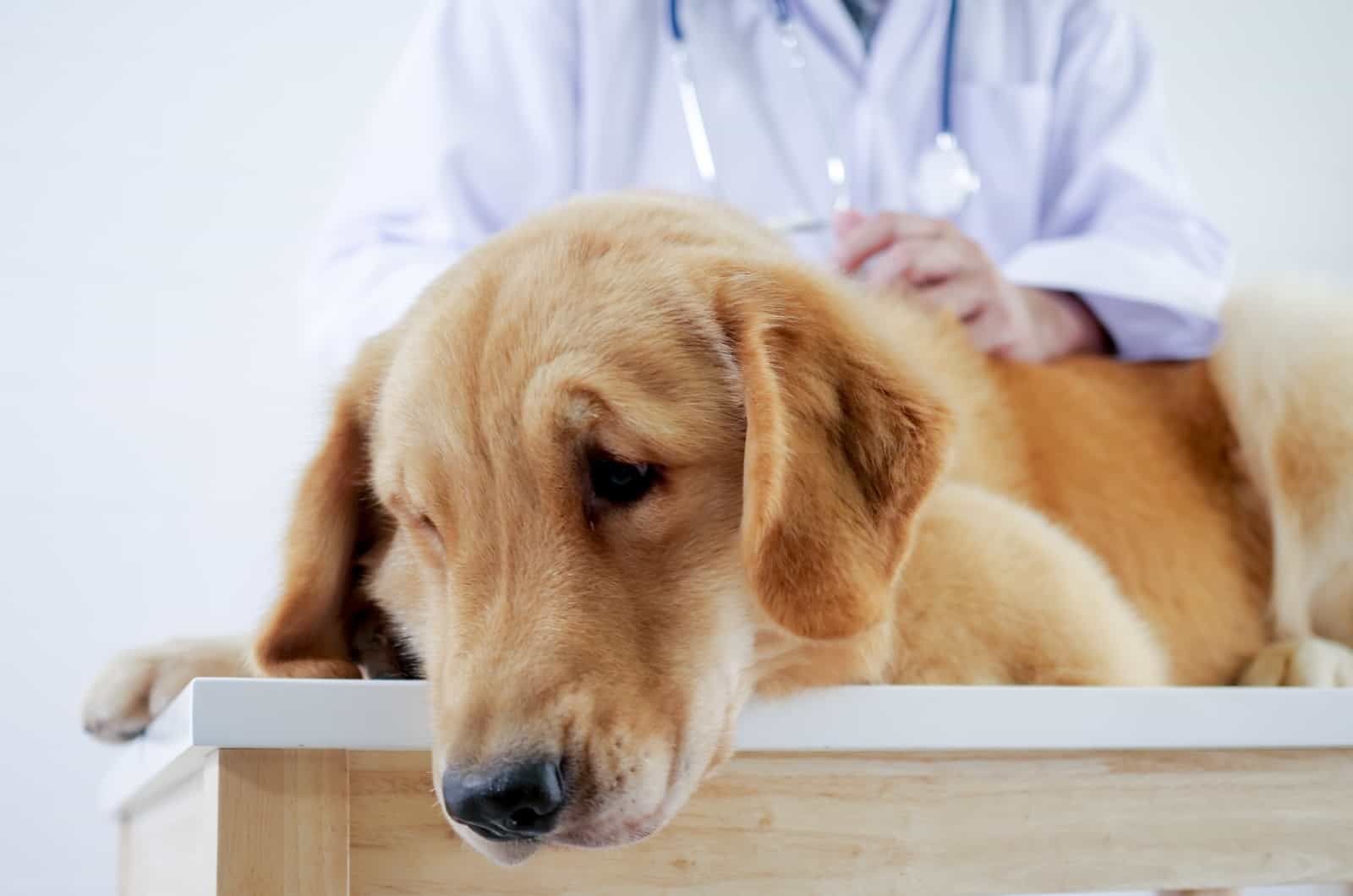
Floating ribs normally should not cause any problems for dogs, so, a floating rib cage in itself is not a cause for alarm.
However, in some cases, dogs might have some health problems related to this last pair of their ribs. Pain and fear might cause your dog to not let you touch it, so, you should not continue with trying if the dog seems in too much pain. You should immediately call a vet.
Let’s see what are health problems connected with dog’s floating ribs.
1. Fractures
A floating rib should not cause any problems for a dog – but, if you notice a protrusion on only one side of a dog’s rib, this could mean that your dog has a rib fracture, rather than only a regular floating rib.
You will easily notice floating ribs, since both sides of your dog’s body will look the same. However, an uneven rib cage in a dog might show that your dog’s rib is broken.
If your dog is having a broken rib, you will notice him being in great pain, and he might want to be alone rather than spend time with you.
The only way to check what exactly is going on with your dog’s rib bones is to see a veterinarian that will identify your dog’s condition with an x-ray.
We would like to emphasize here that a broken rib in itself is not a major medical problem – in fact, your dog may have had a broken rib in the past without you even noticing. Dogs are quite strong animals and often tolerate pain well, so that sometimes we don’t even notice their injuries.
However, a broken rib can also be fatal for dogs. In some cases, a broken rib can puncture a dog’s lung, which will cause the dog to have difficulty breathing.
When the owner notices this, in some cases it may be too late, therefore, leave nothing to chance, and contact your veterinarian as soon as you suspect that your dog may have an injured rib.
2. Lung Damage
In some cases, a broken floating rib can injure the dog’s lungs, which means that there will be interference with the dog’s breathing as well as the dog’s heartbeat.
In very severe cases, a broken rib can also cause an abnormal lump in the dog’s chest, which could potentially puncture the lung.
This condition can even cause the dog’s death, therefore, as soon as you notice that your dog is breathing heavily, and is in a lot of pain, you must contact a veterinarian immediately.
3. Tumors
If you suddenly noticed a pronounced floating rib in your adult dog, this could be a sign of a tumor in the dog’s chest cavity.
We will immediately encourage you and say that these are extremely rare situations; in most cases, a dog with a stressed last pair of ribs will not have a tumor.
However, you should definitely be careful and take your pet to regular veterinary examinations.
How To Distinguish A Broken Rib From A Floating Rib?
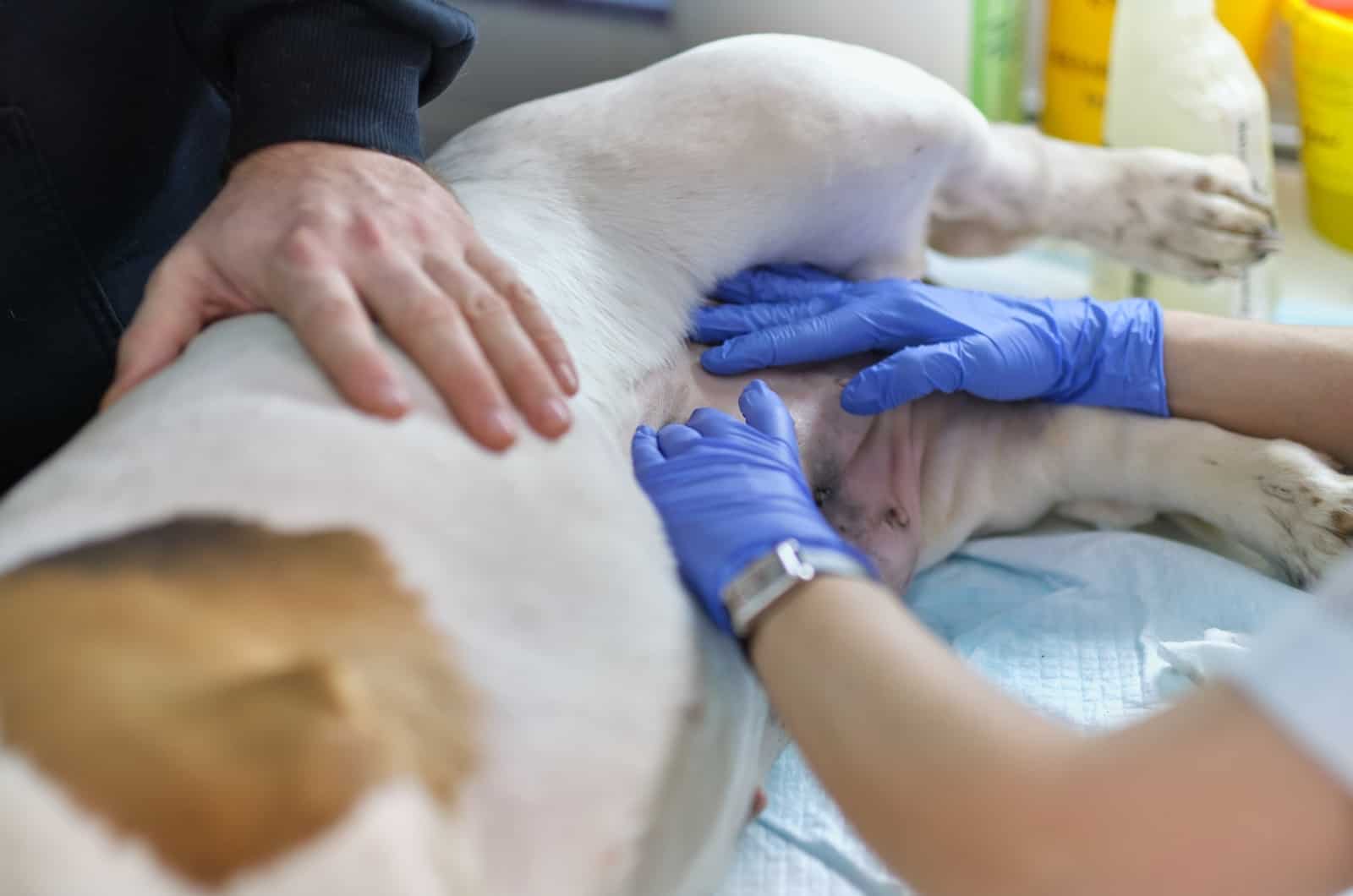
Since a broken rib in a dog sticks out, and so do floating ribs, many dog owners will surely wonder how to differentiate between these two phenomena.
Since you are with your dog every day, you are most likely quite familiar with the anatomy of his body. In a case you are not, we advise you to get to know all the basic parts of the dog’s body in order to be educated if a certain health problem occurs.
So, if you suddenly notice that your dog’s rib is sticking out a lot, it is very likely that the dog’s rib has been injured or broken.
Floating ribs are more visible in certain dog breeds, but even if you’re not the most familiar with canine anatomy, you’ll notice that there’s something unusual about your pet’s body appearance.
In addition, a broken rib will cause pain, possible swelling, and changes in the dog’s behavior – therefore, you will be able to clearly distinguish a broken rib from a normal floating rib.
Do Floating Ribs Go Away?
Will my dog have floating ribs forever, or will this occurrence go away?
Floating ribs in dogs don’t go away, and, in most cases, they are not dangerous for a dog’s health.
When our puppies are growing up, this is the period when the floating ribs will be visible. In many dogs, this changes as they grow up, and you might not even notice the floating rib syndrome in your furry friend.
Floating ribs are more visible in some other dogs than in others, but they don’t ever go away – since they are a normal part of the dog’s anatomy.
What Is The Treatment For Floating Ribs?

Since this is not a medical issue, there is no specific treatment for a dog’s floating ribs. However, these last ribs in dogs are not attached to the dog sternum, but are attached to each other with ligaments.
Therefore, due to the lack of attachment, these ribs are more prone to injuries.
The rest of the dog’s ribs, besides the floating ribs, are also known as the true ribs. The dog’s floating ribs might even be considered as extra ribs, but they are there for a reason, and they usually do not bring harm to the dog’s health.
So, in general, dogs do not need a specific treatment regarding their floating ribs.
The only treatment your dog might need will happen if it will have a broken rib.
How do dogs even get a broken rib? Well, this can happen due to a trauma, or in a car accident, or a dog can get hurt in a dog fight.
No matter how much you care for your pet, you will probably not be with him for every minute of every day, so, your dog might get hurt while you are not present. Many dogs can have a broken rib without you even noticing it.
However, if the injury is more severe, you might notice other symptoms, such as a dog breathing heavily. If this happens, you need to see a veterinarian immediately.
If a dog’s floating ribs are damaged in any way, the vet will prescribe painkillers. In some severe cases, a dog might need surgery to recover entirely.
Is There Anything I Can Do To Help My Dog In Pain?
A veterinarian is the only person that should treat any medical issue in your dog. After the vet examines your dog, he will determine if there is any problem with the dog’s floating ribs.
Still, there are some steps all dog owners can undertake to help their dogs in trouble.
First, we all know how essential it is how often we walk our dogs for their health. However, if your dog is in pain, and is having a hard time just moving from one place to another, you should not force him to do any kind of physical activities – not even walking.
You should give your dog time to rest. Once you see your pooch getting better, then you can start with some lighter physical activities.
Also, if you have children, they certainly love to play with your dog. But, you should explain to your children that they should not play with the dog for at least a couple of days until he feels better.
Also, you can apply a cold compress to the dog’s painful ribs, but we strongly advise you not to do anything without your vet’s approval.
Conclusion
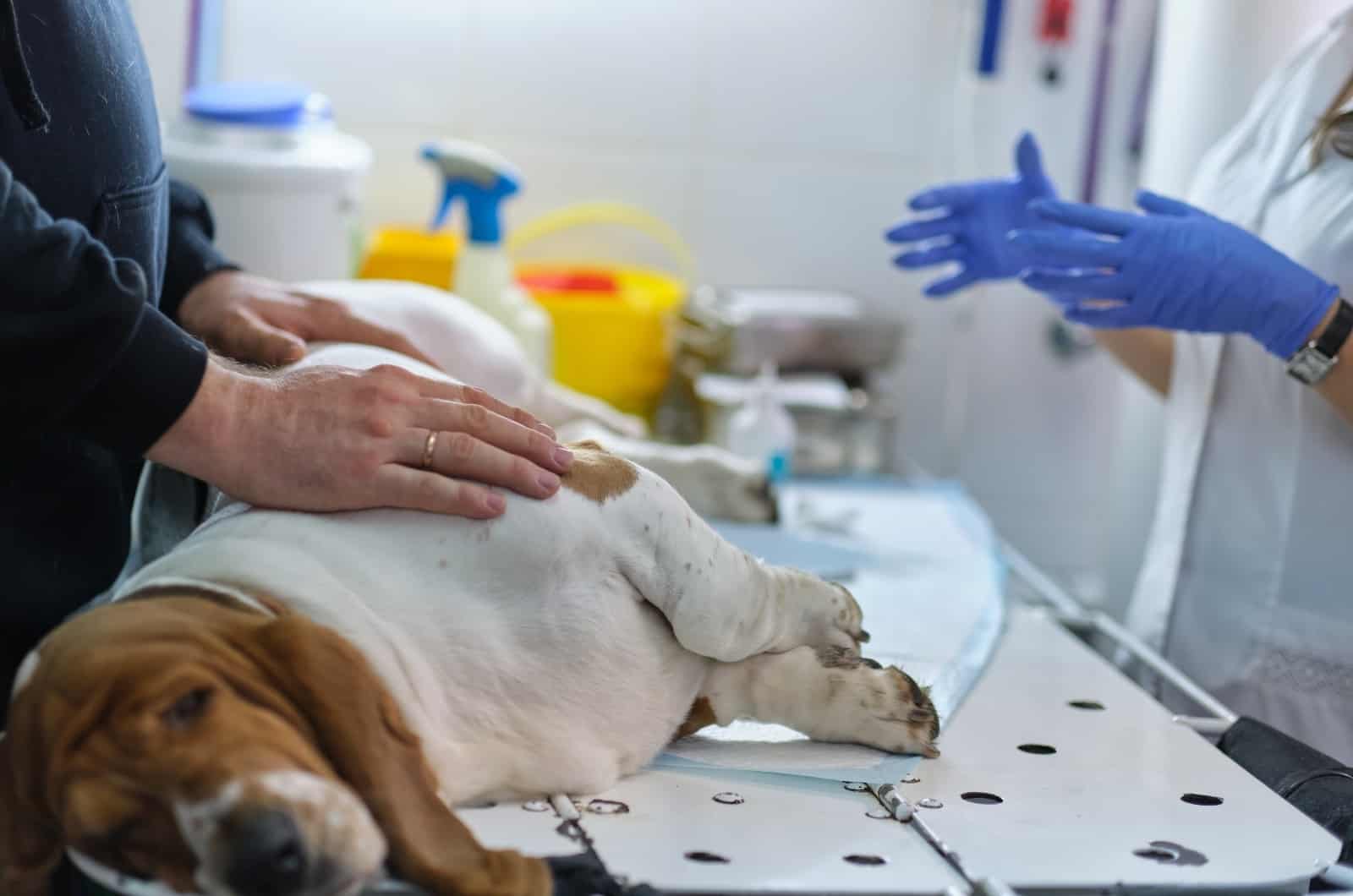
Many owners will notice a phenomenon called floating ribs in dogs, especially when their puppies are in their growth period. As the puppy grows up, his body is forming, he is gaining weight and it is likely that this last pair of ribs will become less and less noticeable.
However, in some short-haired and taller dogs, it is possible that the floating ribs will be noticeable even in adulthood.
This phenomenon could startle some owners and lead them to think that something is wrong with their pet. However, floating ribs are completely normal in all breeds of dogs, and usually do not indicate any health problem.
Still, in some cases, a dog can injure a rib or even break it, which can cause these ribs to be significantly more prominent and visible. Also, floating ribs might cause difficulties with breathing and lung damage in dogs.
So, floating ribs are a normal part of a dog’s anatomy, but might also be connected with certain health problems in our pets.
Floating ribs will only cause damage to a dog’s health when they are injured or broken, and not treated in an appropriate way.
As soon as you notice this phenomenon in your dog, you need to consult a veterinarian immediately. In addition, we always recommend regular visits to the vet to take care of your furry pet’s general health.
Don’t forget – whatever health problem it is, everything can be solved when the problem is detected in time! So, a timely response can save your dog’s life.
Read Next:
• Explaining Dog Behavior Changes After Vaccination In Detail
